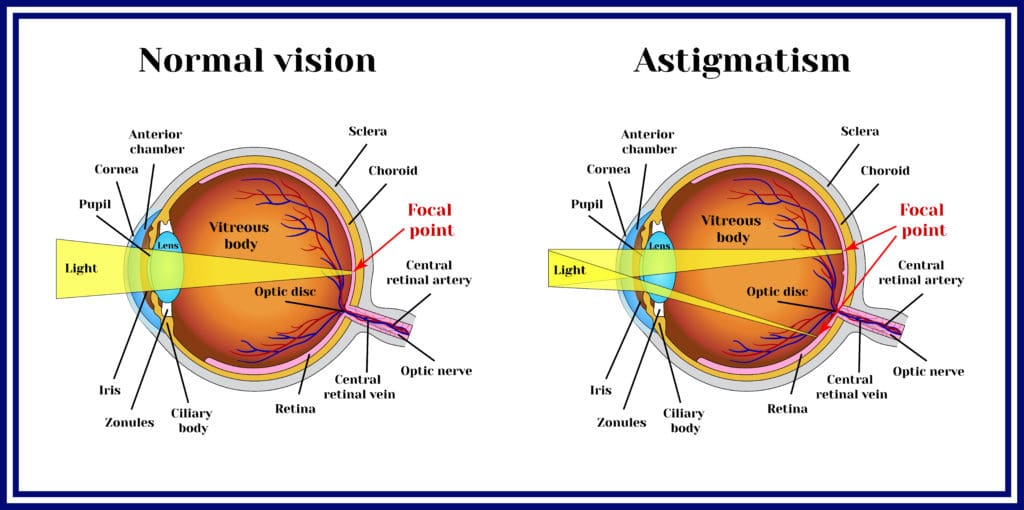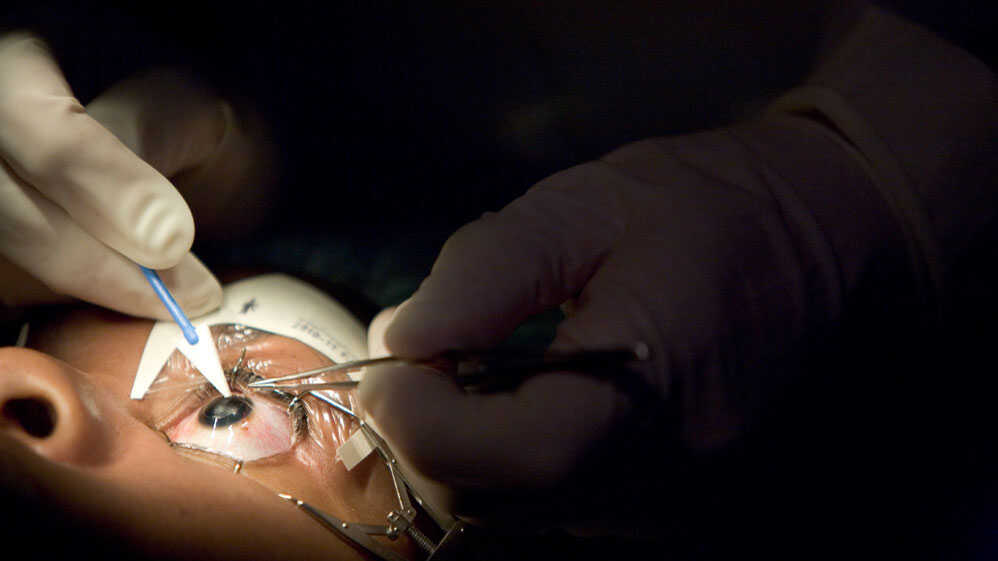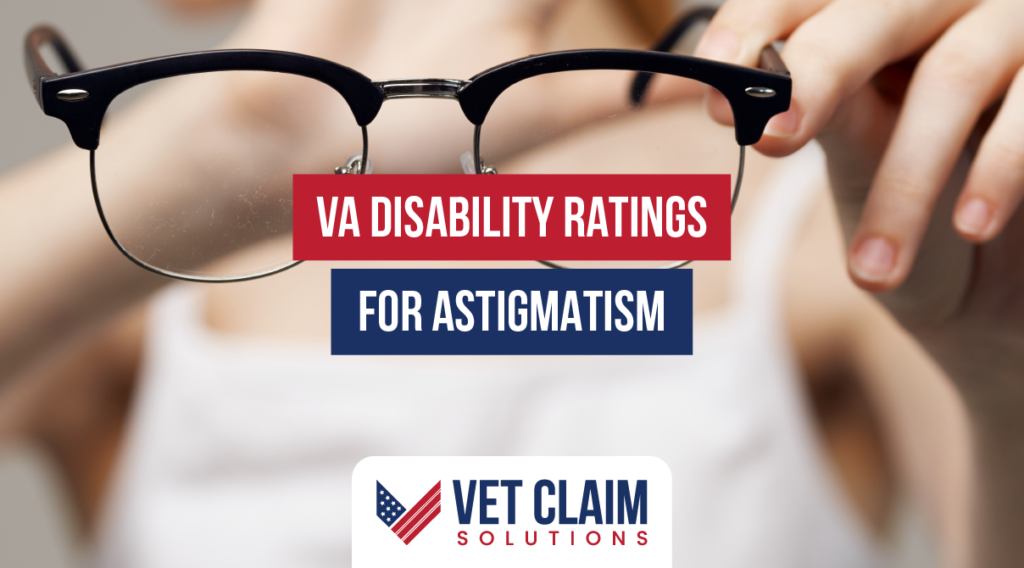Let’s dive straight into the world of VA Disability Ratings for Astigmatism. Navigating the murky waters of VA disability ratings becomes essential for veterans grappling with astigmatism, a prevalent visual impairment. In this article, we’re peeling back the layers on how to connect your service time with astigmatism treatments and claims journey, offering a beacon for those navigating these murky waters.
You’ll learn how astigmatism is rated by the VA despite lacking a specific diagnostic code and what treatments can potentially impact your ratings. Plus, we offer insights into successfully submitting your claim using available resources effectively.
So whether you’re seeking compensation or looking for ways to manage astigmatism better, stick around as we explore these critical areas together.
Understanding VA Disability Ratings for Astigmatism
Astigmatism might sound like a fancy term, but it’s really about your eye’s lens having more of an oval shape than the ideal round one. This leads to blurry vision because light rays don’t hit the retina just right. Now, when we talk about VA disability ratings for astigmatism, there isn’t a direct diagnostic code for it. Instead, the VA looks at how this eye condition affects your peepers’ performance.
What is Astigmatism?

Nearly 350,000 veterans are connected with some type of eye condition, including astigmatism. It refers to an imperfection in the curvature of either your cornea or lens – think less basketball and more American football in shape. The result? Blurry vision that can affect both near and far sightedness.
How Does VA Rate Vision- and Eye-Related Conditions?
The VA rates visual impairments based on central visual acuity (how clear or sharp your central vision is), field of vision (how wide you can see without moving your eyes), and muscle function (how well those tiny muscles around your eyes work). For many vets dealing with visual issues post-service, understanding these criteria is key to navigating through claims successfully.
Service Connection for Astigmatism

Establishing Direct Service Connection
Veterans aiming to link their astigmatism directly to their military stint must gather concrete proof. This usually means medical records showing diagnosis during or symptoms shortly after service. But remember, astigmatism can be tricky; it doesn’t have its own diagnostic code under the VA’s schedule.
Nearly 350,000 veterans are connected to an eye condition like astigmatism through the VA. If you’re looking to join their ranks by proving your vision woes started in the service, get ready to gather up all those old medical files.

If you’re stuck on how to start this process, consider checking out Eye Conditions Disability Benefits Questionnaire. This guide brims with insights that could illuminate the specific requirements the VA expects from you.
The Role of Secondary Conditions
Astigmatism often walks hand-in-hand with other issues like headaches or blurred vision—common secondary conditions tied back to your primary eye problem. When filing your claim, don’t just focus on astigmatism alone but also these buddies hitching a ride.
Veterans who understand both direct and secondary service connections stand a better chance at getting recognized for their visual impairments—and scoring some well-deserved compensation for them too.
Compensation and Pension Exam Insights
If you’re stepping into the world of VA disability claims for astigmatism, know that a Compensation and Pension (C&P) exam is your chance to shine. Conducted by an optometrist or ophthalmologist, this exam plays a pivotal role in how eye conditions are rated.
Dive deep into the Eye Conditions Disability Benefits Questionnaire, which outlines what to expect during your C&P exam. It’s crucial as nearly 350,000 veterans are service-connected for eye conditions like astigmatism. Embarking on this journey isn’t merely another appointment; it’s your moment to vividly portray the impact of your vision on everyday existence.

Preparation can make all the difference. Understand there’s no specific diagnostic code for astigmatism, so details about visual acuity, central visual field, and muscle function will guide rating decisions. Granted disability compensation hinges on clear evidence presented during this examination—so let’s make sure they see things from your perspective.
Treatment Options and Corrective Measures
Non-Surgical Treatments

Eyeglasses and contact lenses are the go-to solutions for astigmatism. They help by correcting the uneven curvature of your cornea or lens, making your vision clearer. But it’s not just about picking any glasses off the shelf; you need a prescription that matches your specific condition.
For those who are always on the move, opting for contact lenses can provide a liberating experience tailored to an energetic life. There’s even a special kind called toric lenses designed just for astigmatism.

If eyeglasses or contacts don’t appeal to you, orthokeratology might be worth exploring. You’ll wear hard lenses while you sleep to gently modify the shape of your cornea temporarily.
Surgical Interventions
Laser surgery options like LASIK have become popular ways to correct astigmatic vision permanently. These procedures work by reshaping the cornea so that light focuses correctly on the retina.

But remember, surgery isn’t suitable for everyone. Factors like eye health, age, and how much correction is needed play into this decision big time.
To dive deeper into these treatment methods, check out Eye Conditions Disability Benefits Questionnaire, which provides valuable insights into managing visual impairments among veterans effectively.
Navigating VA Claims and Resources
Filing a VA claim for astigmatism might seem like navigating through a maze blindfolded. But, it doesn’t have to be that way. Armed with proper direction and tools, lodging your claim becomes a journey you can tackle assuredly.

First off, grab the VA Form 21-526EZ. Holding this document in your hands is like clutching the key that kicks off your journey through the claims maze. It’s straightforward but requires attention to detail. Make sure all information about your service and health condition is accurate.
Conclusion
Grasping VA Disability Ratings for Astigmatism isn’t just smart; it’s vital. You’ve learned the ropes, from how astigmatism impacts your rating to fighting for rightful compensation.
Navigate this journey with knowledge. Understand there’s no direct code but ways around it. Remember, treatments can sway your ratings – a crucial piece of the puzzle.
Submitting claims? Do it right. Harness your tools with care and always set your sights on excellence.
So here you stand, better equipped and informed. Navigate the labyrinth of VA disability benefits with these newfound insights as your compass.
Your path is clearer now because knowing beats guessing every time.


